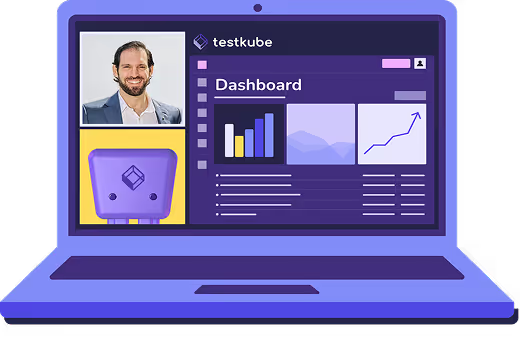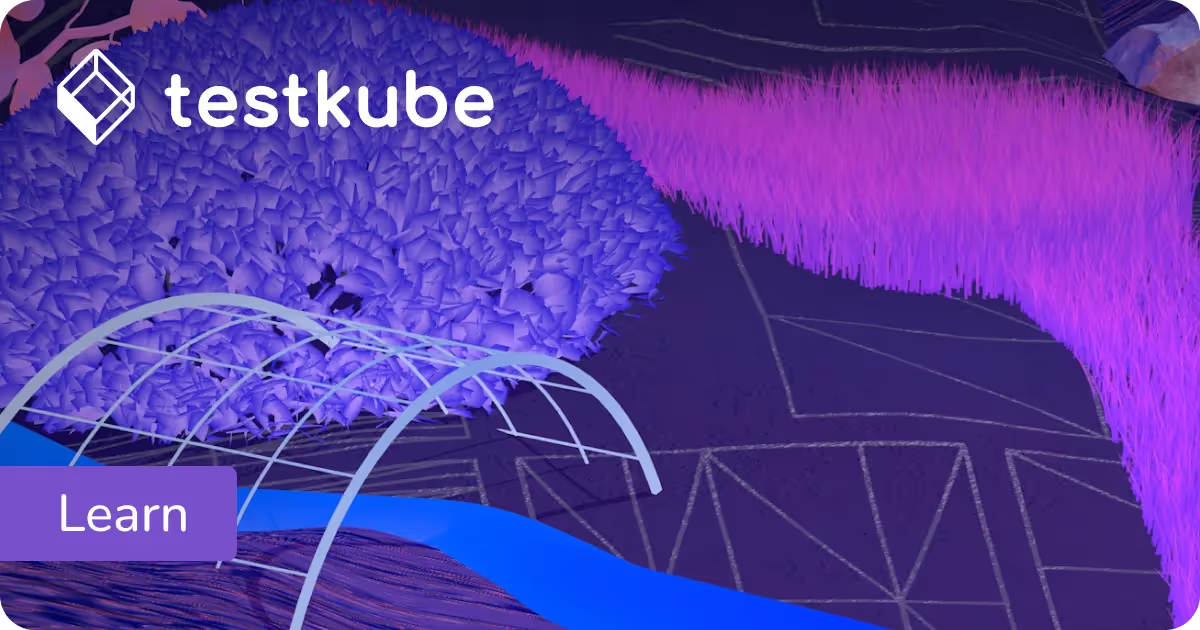Table of Contents
What Does Smoke Testing Mean?
Smoke testing is a preliminary check performed on a new build or deployment to confirm that the most important functionality works as expected. Sometimes called a "build verification test" or "sanity check," smoke tests don't aim to find every bug. Instead, they act as a gatekeeper to ensure that critical paths, like logging in, loading the homepage, or running a key service, function before investing resources in deeper testing.
In cloud-native and Kubernetes-native environments, smoke testing often extends beyond application logic to include infrastructure readiness. That means verifying pods start correctly, services are reachable, and key integrations initialize successfully. This preliminary testing approach helps development teams identify critical failures early in the software development lifecycle, preventing unstable builds from progressing through deployment pipelines.
The Origins and Purpose of Smoke Testing
The term "smoke testing" originates from hardware testing practices, where engineers would power on a device and observe whether it literally produced smoke, a clear indication of catastrophic failure. In software development, smoke testing serves a similar purpose: verifying that an application doesn't immediately "catch fire" when deployed or executed.
These preliminary tests focus exclusively on the most critical functionality that would render the application unusable if broken. Rather than attempting comprehensive coverage of all features, smoke tests validate that the basic infrastructure and core user journeys function properly. This allows teams to fail fast and avoid wasting time and computational resources on deeper testing of fundamentally broken builds.
Why Smoke Testing Matters
Without smoke testing, teams risk wasting hours running full regression suites or performance tests against an unstable build. By catching obvious issues early, smoke tests improve efficiency and developer experience while reducing overall testing costs and accelerating feedback loops in modern software development practices.
Modern DevOps teams use smoke testing to:
- Prevent broken builds from reaching later pipeline stages – Smoke tests act as a quality gate in continuous integration and continuous deployment (CI/CD) pipelines, stopping defective code before it consumes additional resources or reaches production environments.
- Ensure cluster or environment provisioning worked correctly – In containerized and cloud-native architectures, smoke tests verify that infrastructure components like load balancers, networking configurations, storage volumes, and orchestration platforms are properly configured and operational.
- Save compute costs by avoiding long test runs on unstable deployments – Running comprehensive test suites against broken builds wastes valuable computing resources and extends feedback cycles unnecessarily. Smoke tests identify critical failures in minutes rather than hours.
- Improve confidence in fast-moving CI/CD pipelines – With rapid deployment cadences becoming the norm, smoke tests provide quick validation that gives development teams confidence to deploy frequently while maintaining quality standards and minimizing production incidents.
Smoke Testing vs. Other Testing Types
Understanding how smoke testing differs from other testing methodologies helps teams implement the right testing strategy at the right stage of development.
This comparison highlights that smoke testing occupies a unique position in the testing pyramid—providing rapid validation without the time investment required by more comprehensive testing approaches.
Common Challenges and Solutions
Challenge 1: Flaky smoke tests
Tests that fail due to infrastructure delays or non-deterministic behavior can create noise and erode confidence in the testing process. Flaky tests are particularly problematic because they can block deployments unnecessarily or cause teams to ignore legitimate failures.
Solution: Run smoke tests in the same Kubernetes environment as the app, ensuring alignment with real conditions. Implement appropriate wait strategies, health checks, and timeout configurations to account for infrastructure startup times. Design tests with idempotency in mind and use retry mechanisms judiciously for network-dependent operations. Ensure test environments closely mirror production infrastructure to eliminate environment-specific inconsistencies.
Challenge 2: Scope creep
Teams often expand smoke tests until they're too slow to run in pipelines, defeating the original purpose of quick validation checks. What begins as a five-minute verification can grow into a thirty-minute suite that blocks rapid deployment.
Solution: Keep smoke tests minimal, just enough to validate build stability before moving forward. Establish clear governance criteria for what qualifies as a smoke test versus an integration or end-to-end test. Focus exclusively on critical paths that would make the application completely unusable if broken. Regularly audit the smoke test suite to remove tests that have crept beyond the core scope. Remember that smoke testing is about breadth of critical functionality, not depth of coverage.
Challenge 3: Poor visibility
Without centralized reporting, it can be hard to track smoke test outcomes across multiple services and pipelines. In microservices architectures with numerous distributed components, this visibility challenge multiplies exponentially.
Solution: Use a continuous testing platform that centralizes execution results and integrates with observability tools. Implement dashboards that provide immediate visibility into test status across all services and environments. Integrate test results with monitoring and alerting systems to ensure failures trigger appropriate notifications. Aggregate results to identify patterns, trends, and problematic areas that require attention.
Real-World Examples and Use Cases
E-commerce checkout validation
A smoke test verifies that a user can log in, add an item to a cart, and proceed to checkout. This validates the most revenue-critical functionality before investing in extensive performance or security testing. Additional checks might include verifying product catalog loading, payment gateway connectivity, and order confirmation generation.
Microservices startup verification
A team validates that all Kubernetes pods in a new namespace start and become ready within expected timeframes. This includes confirming that configuration maps and secrets mount correctly, dependencies are reachable, inter-service communication functions properly, and health check endpoints return successful responses.
API readiness
An API gateway responds to a health check before exposing endpoints to external traffic. The smoke test verifies that the gateway routes requests correctly to backend services, authentication mechanisms function properly, and critical API endpoints return expected responses without errors.
Database migration validation
After deploying database schema changes, smoke tests confirm that migrations completed successfully, the database remains accessible, critical tables contain expected structures, and basic CRUD operations function correctly against the updated schema.
Content delivery network verification
Smoke tests confirm that static assets are properly distributed and served from CDN edge locations, SSL certificates remain valid, cache configurations work as expected, and cache invalidation mechanisms function correctly after frontend deployments.
Best Practices for Smoke Testing
To maximize the effectiveness of smoke testing in your development workflow, consider these proven approaches:
- Maintain fast execution times – Smoke tests should complete in minutes, providing rapid feedback without becoming a pipeline bottleneck.
- Test critical user journeys – Focus on end-to-end scenarios that represent the most important user workflows rather than testing isolated components or functions.
- Keep tests independent – Each smoke test should run independently without dependencies on other tests or shared state, ensuring reliable execution regardless of test order.
- Use production-like environments – The closer test environments match production configurations, the more reliable smoke test results become in predicting production behavior.
- Implement clear pass/fail criteria – Avoid ambiguous test results by establishing explicit success criteria that anyone can understand and interpret.
- Automate everything – Manual smoke testing is too slow and inconsistent for modern development practices. Full automation ensures consistent execution and rapid feedback on every build.
- Version control test code – Store smoke tests in version control alongside application code so they evolve together and remain synchronized with functionality changes.
How Smoke Testing Works with Testkube
Testkube makes it easy to implement smoke testing in Kubernetes-native pipelines. With Testkube, teams can:
- Run smoke tests automatically on each deployment to a cluster.
- Centralize reporting across microservices, pipelines, and test frameworks.
- Keep tests lightweight while ensuring infrastructure and app stability.
- Fail fast, if smoke tests don't pass, Testkube prevents downstream jobs from consuming more compute.
By embedding smoke tests into Kubernetes-native workflows, Testkube ensures that even in AI-accelerated, high-velocity pipelines, bad builds never slip through unnoticed.





